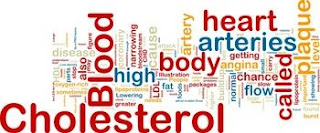Colestipol (Colestid)
Mechanism of action:
Colestipol (Colestid) bind with bile acids and impair their absorption and reduce enterohepatic circulation and re-utilization of bile acids. Colestipol (Colestid) also decreases the absorption of dietary cholesterol. In this way, Colestipol (Colestid) decrease the absorption of cholesterol and blood level of cholesterol is decreased.
Therapeutic Uses:
Colestipol (Colestid) is effective in reducing plasma cholesterol level (to about 10 - 20 % ) in patients with some normal LDL receptors. Colestipol (Colestid) is ineffective in the treatment of patients who completely lack LDL receptors due to a genetic defect ( homozygous familial hypercholesterolemia).
Adverse Effects:
Colestipol (Colestid) is generally safe because are not absorbed in the small intestine. common side effects are;
1. constipation
2. nausea
3. discomfort
4. these drugs interfere with the absorption of anionic drugs ( e.g digitalis and warfarin)
